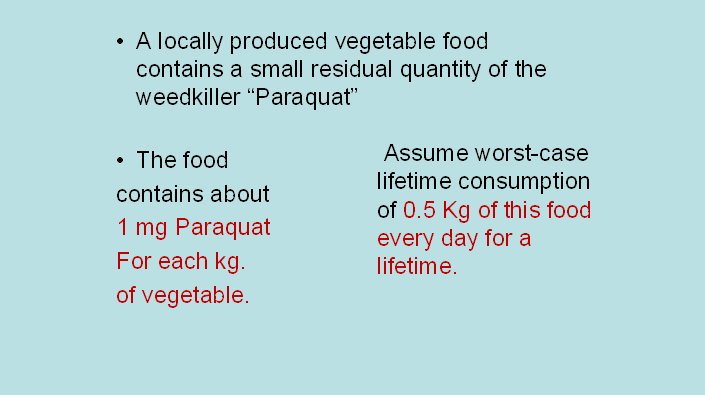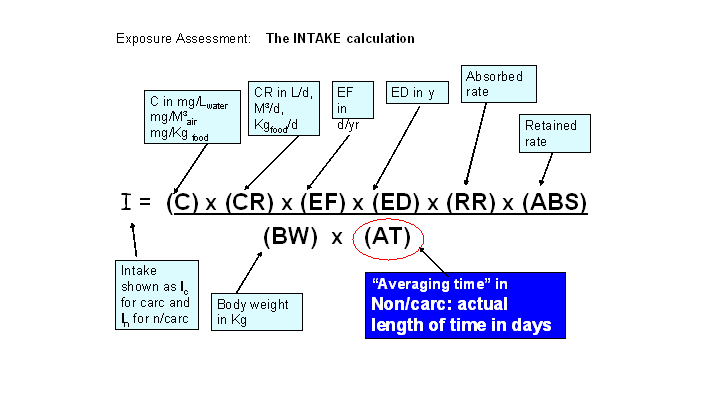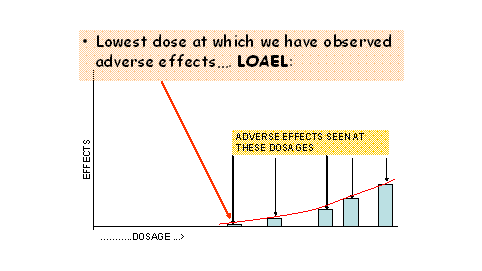





First we identify paraquat as a toxicant but not a carcingen
from examining the EPA-IRIS data. It has an "oral RfD"
(reference dose) displayed but no CPF (carc. potency factor).


We enter the values, using for the averaging time,
the actual number of days exposed - here a lifetime
(70 yrs x 365 d = 25,550d). Pay close attention to the
correct units.

In the next slide we have calculated the intake (I) as 0.00714 mg/Kg.d,
and need to divide the intake by the RfD from the EPA-IRIS data (online):


Another example:

REVIEW on Carcinogenesis and measurements:






The slope factor (SF) in the slide below
is called CPF in the EPA material

REVIEW OF LOAEL/NOAEL/ADI/RfD





RISK CHARACTERIZATION FOR CARCINOGENS

HERE'S AN EXAMPLE OF THE CALCULATION



This type of calculation is done for a lifetime assuming
worst-possible 2 litres/day for a 70 kg adult. We can
therefore cancel the ED, EF, and AT.

Risk is calculated as the intake (I) x CPF


So 2 L/d of concentration 0.12 mg/L is 1852 times too high

Here is a analysis table showing water containing several
chemicals, and the risks are shown as the right-hand
column (for lifetime exposure of 2L/d.


In some examples, we can ask the people not to eat
as much of the food (e.g. certain fish) to lower their
intake, but with water, we would have to give them
alternate supply of water.